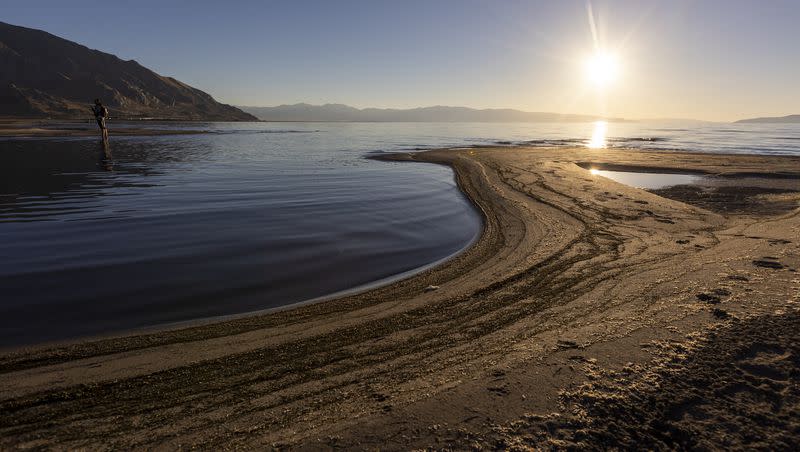Perspective: Water has always been a symbol of faith and renewal

- Oops!Something went wrong.Please try again later.
Water scarcity is our reality but also our opportunity. Scarcity teaches us to place greater value on that which is at risk. This is perhaps why biblical prophets who lived in deserts speak of mountains as symbols of God’s strength and mountain water as a reminder of God’s mercy. Mountain water relies on snowpack and spring runoff. It fills the streams and rivers and aquifers and brings life to our arid and fragile home. No wonder the great faiths speak of water as holy. It renews and sustains all life. Christians are baptized and cleansed by it. Today Latter-day Saints drink water every week as a symbol of their redeemer.
Jesus is known as the fountain of living waters.
I grew up around water, in Connecticut, where rivers, ponds and streams were abundant. When I moved back to Utah, the state of my birth, in 1998, I knew I would have to do as Wallace Stegner once advised and somehow get over the color green. It took effort and a determination to stop wanting to make the landscape after the images I had in my mind of verdant beauty. In time, as I learned to let the landscape imprint itself on me, I began to perceive and receive the native tonalities and ranges of color of Utah’s blossoming deserts that needed no human intervention to render them beautiful.
I also began to perceive the ways in which we failed to respect the semi-arid qualities of the Great Basin. I could see that we sometimes built and acted as if we lived in a wetter world than we do. It has taken the dramatic shrinking of the Great Salt Lake and the danger of airborne toxic elements to awaken us to a crisis that has been slowly building since the foundations of modern civilization in the West. We are growing rapidly, and, despite the generous bounty of this winter, we will always be vulnerable to the possibility of diminished spring runoff due to a changing climate. It’s simple math: We will have to learn to make do with less water for more people.
Related
Church makes largest-ever donation of water shares to benefit Great Salt Lake
New analysis says Great Salt Lake can be saved, but not without great effort and expense
The recent conversations at the state and municipal levels about water conservation are wonderful, even if overdue. I am a member of the city council in Provo, and we are engaged in robust conversations about how we can play our part in mitigating the effects of this drought. I especially celebrate that my church, The Church of Jesus Christ of Latter-day Saints, has generously agreed to donate up to 20,000 acre feet of its water rights to help protect the Great Salt Lake. This is the impressive equivalent it would take to cover the entire city of Lehi in a foot of water, every year.
It might seem odd that a church dedicated to things of a heavenly realm would feel such responsibility to an earthly resource like water. However, as Bishop Gérard Caussé, presiding bishop of The Church of Jesus Christ of Latter-day Saints, so eloquently taught recently, we are stewards of God’s creations. He said: “At the end of this mortal existence, the Master will ask us to give an account for our sacred stewardship, including how we have cared for His creations.” Surely this includes our stewardship of water, the very source of life for us and our fellow creatures.
To take water for granted or to waste it could hardly be described as an adequate response to the mercy it manifests. Like all generous and undeserved gifts, water should be received with the most grateful and determined effort to use it with moderation and in a spirit of generosity for our neighbor. Water doesn’t recognize borders or religious or political differences. We fail when we allow our differences to divide our ability to work together to preserve and manage our water resources on behalf of the common good.
The threats of drought and climate change need not be met with fear or denial. As Latter-day Saints and other people of faith across the world awaken to our environmental problems, they are learning to face these threats with faith, which includes accepting the responsibility to appreciate, preserve and protect the beauty of God’s bounty. Along with other people of faith and of good will, Latter-day Saints should exercise stewardship of water as one important way to honor God’s Son, the Living Water, and the Creator of this beautiful world.
George Handley is a professor at Brigham Young University and member of the Provo City Council. He has written numerous articles and books, including the environmental memoir “Home Waters: A Year of Recompenses on the Provo River.”

